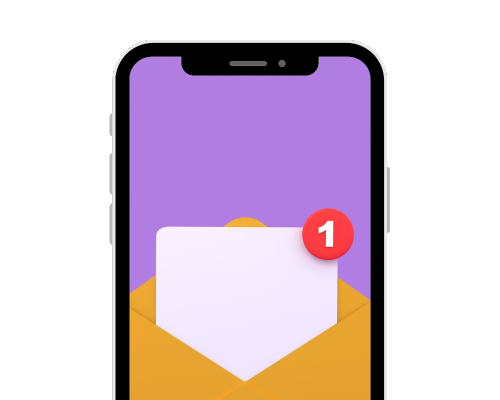Blogs
23 Affiliate Marketing Terms You Need to Know
.png/fit-in/1440x9999/filters:no_upscale())
23 Affiliate Marketing Terms You Need to Know
'Affiliate marketing is hard enough without feeling confused every time you open up a blog post for tips. What is attribution anyway? What's the difference between an impression and a click through? Why do CPC and CPA always seem to stand for something different? Trust us, you're not the only one asking these questions.
'Here are the 23 most important terms you've seen around that you definitely need to know. Once you have these mastered, you'll be slinging the jargon with the best of them.
'-
Affiliate Link:
This is the unique link that contains your affiliate's identifier (name or username) that they give out. These links are used to keep track of how many sales or visits come from each affiliate.
' -
Attribution:
Attribution identifies the path or journey of a website visitor. It keeps track of where site traffic is coming from and who may have sent them. This is critical for making sure affiliates are getting recognized for sending traffic your way.
' -
Campaign:
A campaign is a series of ads or content pieces that all try to garner interest and conversions with a cohesive message. An ad campaign may be a series of ads that run on Facebook, and a content campaign might be an email series to nurture your list.
' -
Conversion:
A conversion is what happens when a site visitor performs the desired action'buying something, signing up for a demo, or subscribing to a service.
' -
Cookie:
A cookie is a small line of code that websites leave on your computer that track if you've been to the site before. Cookies are used to personalize websites and target ads.
' -
CPA (Cost-per-Acquisition):
This is how much it costs to acquire a new paying customer. It can also be called cost-per-conversion. This may be a pricing model for online ads, or a pricing model for an affiliate program.
' -
CPC (Cost-per-Click):
This is how much it costs to get a customer to click through to your site. It can also be called cost-per-action. And like CPA, it may be a pricing model for ads or for an affiliate program.
' -
CTA (Call to Action):
A CTA is a button, line of text, or graphic that shows a site visitor what the desired action is. It should be clear and easy to understand.
' -
CTR (Click Through Rate):
This is the number of people who have clicked through a link to visit your desired page. CTR is tracked on all sorts of links, from ads, to email links, to affiliate links.
' -
Ecommerce:
Ecommerce is the online retail industry, centered around buying and selling products on the internet. It is an industry that frequently uses affiliate marketing.
' -
Impression:
An impression is when an ad or link has shown up on a viewers page. An important thing to note is that getting an impression does not mean that the audience member engaged at all with your ad or link; they just had the chance to, because it was shown to them.
' -
Influencer:
This is someone who has a large and/or highly-engaged audience who follows them. Influencers frequently partner with brands to show products or services to their audience. Note'Not all influencers are affiliates, and you don't have to be an influencer to be a good affiliate marketer.
' -
Landing Page:
A landing page is the web page you drive potential customers to from an ad or CTA. It is usually separate from your main website and contains information about a product or service you want people to buy or sign up for.
' -
Lead:
A lead is someone who has shown some interest in your product or service by clicking on an ad (but not converting) or signing up for a newsletter. Leads usually perform small transactions of time or information, but not money.'
' -
Native ads:
These are 'ads' that live on your site and drive visitors to other places on your site. They could be an ad for related content on your blog, or an ad for your podcast page.
' -
Niche:
A niche is a small industry or group that is somewhat specialized. For example, affiliate marketing is a niche within the marketing industry.
' -
Partnership Marketing:
Partnership marketing covers all kinds of business collaboration, from influencer marketing to distribution partnerships. Affiliate marketing falls under that umbrella, though the terms are sometimes used interchangeably.'
' -
Pixel:
A pixel is a line of code that allows you to track who has been to the page. This is usually used to gather information about the visitors and send targeted ads to them later.''
' -
Post-Back URL:
This is a specialized URL that has additional parameters that are added when a conversion takes place. It is used to verify conversions and track information.
' -
Referral Bonus:
Some affiliate programs offer a bonus if you refer other people to be affiliates.'
' -
Retargeting (Remarketing):
Retargeting is when you track who has clicked through an ad, and you send them a different ad that encourages them to covert. These are extremely helpful because it usually takes more than one touch-point to convert a customer.
' -
Traffic:
Traffic is the amount of site visitors you get within a certain period of time. Traffic can be broken down into categories like organic traffic (people who found your site from Google or social media) and direct traffic (people who looked up your website directly).
' -
Two-Tier (Multi-Tier) Affiliate Program:
A two-tier or multi-tier affiliate program is one that not only gives commissions for any clicks or conversions, but they also give commissions for any clicks or conversions from people you have referred to the program. This offers incentives for referrals as well as conversions.
'
Now that you know all the basic terms in affiliate marketing, you're ready to get out there and get your affiliates together and skyrocket your conversions.'



)
)

